Watering the plants
Why is it important to regularly water your plants?
- Plants require constant food supply for their growth. By ensuring an adequate supply of water, the plant will grow better and faster. Most vegetable plants and flower plants require water once a day so it’s not a very hard task, just fix a time that is convenient for you and water your plants at that hour daily. Personally, I recommend that you water your plant either early in the morning or early evening.
- Depending on the plant decide the quantity of water. For example, Hibiscus requires more water and therefore, daily watering is advised. Whereas most of the indoor plants and succulents require less water due to its ability to retain water in its leaves thus requiring less water than other plants.
- Another important factor to consider is the location of the plant. Indoor plants receive less sunlight whereas plants kept outdoors receive more sunlight daily. Therefore, while fixing the water frequency one should also take into consideration the location and characteristics of the plant.
- Understand your plant and what it requires. Based on this keep a water schedule and log in your water hour daily. You could also make use of irrigation technology, such as – Sprinklers, Drip irrigation system, Manual watering and the Hydroponic system- these could help ease your watering schedule and act as an efficient and convenient watering system.
- It is essential to check the moisture level of the soil in every pot to ensure plant roots are not wet. In case, there is any excess water found in the container, drain it out from the pot immediately. Too much water could spoil the roots and it may kill the plant.
- Lastly, make sure to provide adequate amount of NPK ( Nitrogen, Potassium and Phosphorous) along with water, to ensure a healthy and steady growth of the plant. Seek proper advice for your plant and the amount of fertilizer it requires, before beginning the fertilizer course.
Ways to water your plants
All garden plants require a consistent supply of water to perform their best. Inconsistent moisture poses challenges to the plant and creates problems such as blossom drop, poor root development, leaf curling, insect infections and rotting. Therefore, mentioned below are my recommendations on the watering techniques that one could consider while gardening.
- Drip irrigation system – This is a type of micro-irrigation system that has the potential to save water and nutrients by allowing water to drip slowly into the roots of plants, either from above the soil surface or when buried below the soil surface. It is essential to identify the best type of drip system based on the area and size of your garden.
- Self-watering planter – Keeping a container or automated system and filling the reservoir every few days is another way to go about watering your plants. The plants absorb moisture as and when they need it.
- Hydroponic watering system
Items used in drip irrigation (listed in order from water source).
- Pump or pressurized water source.
- Water filter(s) or filtration systems
- Backwash controller (back flow prevention device )( optional )
- Pressure Control Valve ( pressure regulator)
- Distribution lines (main larger diameter pipe, maybe secondary smaller, pipe fittings)
- Hand-operated, electronic, or hydraulic control valves and safety valves(optional)
- Smaller diameter polyethylene tube (often called “laterals”)
- Poly fittings and accessories (to make connections)
- Emitting devices at plants (emitter or dripper, micro spray head, inline dripper or inline drip tube).
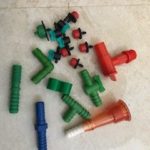
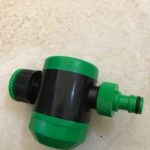
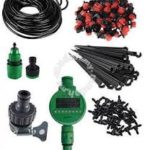
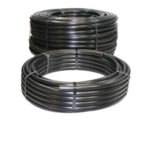
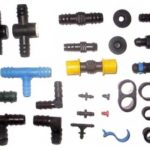
Some of the Drip irrigation items i have used in my garden is shown above. All the items are available online .It is recommended to seek experts advice before implementing drip water irrigation system for your garden. Small garden of 20 feet * 20 feet area would cost approximately 20,000 Indian rupees or 3000 USD. Amount may vary depending on the number of items you buy.